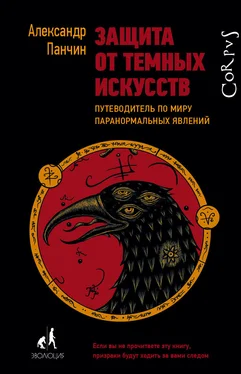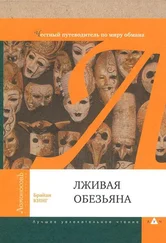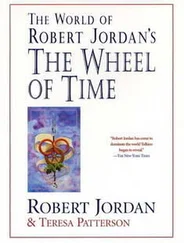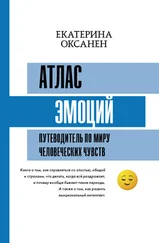Olson J. A. et al.: Simulated thought insertion: influencing the sense of agency using deception and magic . Conscious Cogn 2016, 43: 11–26.
Johansson P. et al.: Failure to detect mismatches between intention and outcome in a simple decision task . Science 2005, 310 (5745): 116–119.
Sagana A. et al.: Memory impairment is not sufficient for choice blindness to occur . Front Psychol 2014, 5: 449.
Johansson P. et al.: Choice blindness and preference change: you will like this paper better if you (believe you) chose to read it! J Behav Decis Mak 2013, 27 (3): 281–289.
Hall L. et al.: Magic at the marketplace: choice blindness for the taste of jam and the smell of tea . Cognition 2010, 117 (1): 54–61.
Johansson P., Chater N.: Preference change through choice . In Dolan R., Sharot T. (Eds.): Neuroscience of Preference and Choice. 2011.
Cochran K. J. et al.: Memory blindness: altered memory reports lead to distortion in eyewitness memory . Mem Cognit 2016, 44 (5): 717–726.
Olson J. A. et al.: Influencing choice without awareness . Conscious Cogn 2015, 37: 225–236.
Deecke L. et al.: Distribution of readiness potential, pre-motion positivity, and motor potential of the human cerebral cortex preceding voluntary finger movements . Exp Brain Res 1969, 7 (2): 158–168.
Libet B. et al.: Time of conscious intention to act in relation to onset of cerebral activity (readiness-potential). The unconscious initiation of a freely voluntary act . Brain 1983, 106 (Pt 3): 623–642.
Libet B. et al.: Readiness-potentials preceding unrestricted “spontaneous” vs. pre-planned voluntary acts . Electroencephalogr Clin Neurophysiol 1982, 54 (3): 322–335.
Soon C. S. et al.: Unconscious determinants of free decisions in the human brain . Nat Neurosci 2008, 11 (5): 543–545.
Perez O. et al.: Preconscious prediction of a driver’s decision using intracranial recordings . J Cogn Neurosci 2015, 27 (8): 1492–1502.
Cerf M.: Free won’t. 2015. www.youtube.com/watch?v=6dqNiSGo9yU
Soon C. S. et al.: Predicting free choices for abstract intentions . Proc Natl Acad Sci USA 2013, 110 (15): 6217–6222.
Wegner D.: The Illusion of Conscious Will . 2003.
Wegner D. M.: Précis of the illusion of conscious will . Behav Brain Sci 2004, 27 (5): 649–659; discussion 59–92.
Haggard P.: Conscious intention and motor cognition . Trends Cogn Sci 2005, 9 (6): 290–295.
Lau H. C. et al.: Attention to intention . Science 2004, 303 (5661): 1208–1210.
Jung C.: Synchronicity: An Acausal Connecting Principle . 1978.
Hansel C.: ESP: A Scientific Evaluation . 1980.
Quiroga R. Q.: Gnostic cells in the 21 st century . Acta Neurobiol Exp (Wars) 2013, 73 (4): 463–471.
Barlow H. B.: Summation and inhibition in the frog’s retina . J Physiol 1953, 119 (1): 69–88.
Lettvin J. et al.: What the frog’s eye tells the frog’s brain . Proc IRE 1959, 47: 1940–1951.
Barlow H.: Possible principles underlying the transformation of sensory messages . In Rosenblith W. (Ed.): Sensory Communication . 1961.
Jonas J. B. et al.: Human optic nerve fiber count and optic disc size . Invest Ophthalmol Vis Sci 1992, 33 (6): 2012–2018.
Perrett D. I. et al.: Visual neurones responsive to faces in the monkey temporal cortex . Exp Brain Res 1982, 47 (3): 329–342.
Fried I. et al.: Single neuron activity in human hippocampus and amygdala during recognition of faces and objects . Neuron 1997, 18 (5): 753–765.
Kreiman G. et al.: Category-specific visual responses of single neurons in the human medial temporal lobe . Nat Neurosci 2000, 3 (9): 946–953.
Kreiman G. et al.: Imagery neurons in the human brain . Nature 2000, 408 (6810): 357–361.
Quiroga R. Q. et al.: Invariant visual representation by single neurons in the human brain . Nature 2005, 435 (7045): 1102–1107.
Quiroga R. Q.: Concept cells: the building blocks of declarative memory functions . Nat Rev Neurosci 2012, 13 (8): 587–597.
Birbaumer N. et al.: Brain-computer interface in paralysis . Curr Opin Neurol 2008, 21 (6): 634–638.
Carmena J. M. et al.: Learning to control a brain-machine interface for reaching and grasping by primates . PLoS Biol 2003, 1 (2): E42.
Velliste M. et al.: Cortical control of a prosthetic arm for self-feeding . Nature 2008, 453 (7198): 1098–1101.
Monkey’s brain controls robotic arm. www.youtube.com/watch?v=wxIgdOlT2cY
Collinger J. L. et al.: High-performance neuroprosthetic control by an individual with tetraplegia . Lancet 2013, 381 (9866): 557–564.
Hochberg L. R. et al.: Reach and grasp by people with tetraplegia using a neurally controlled robotic arm . Nature 2012, 485 (7398): 372–375.
LaFleur K. et al.: Quadcopter control in three-dimensional space using a noninvasive motor imagery-based brain-computer interface . J Neural Eng 2013, 10 (4): 046003.
Capogrosso M. et al.: A brain-spine interface alleviating gait deficits after spinal cord injury in primates . Nature 2016, 539 (7628): 284–288.
Ethier C. et al.: Restoration of grasp following paralysis through brain-controlled stimulation of muscles . Nature 2012, 485 (7398): 368–371.
Ajiboye A. et al.: Restoration of reaching and grasping movements through brain-controlled muscle stimulation in a person with tetraplegia: a proof-of-concept demonstration . Lancet 2017, 389 (10081): 1821–1830.
Flesher S. N. et al.: Intracortical microstimulation of human somatosensory cortex . Sci Transl Med 2016, 8 (361): 361ra141.
Collins K. L. et al.: Ownership of an artificial limb induced by electrical brain stimulation . Proc Natl Acad Sci USA 2017, 114 (1): 166–171.
Pais-Vieira M. et al.: A brain-to-brain interface for real-time sharing of sensorimotor information . Sci Rep 2013, 3: 1319.
Miyawaki Y. et al.: Visual image reconstruction from human brain activity using a combination of multiscale local image decoders . Neuron 2008, 60 (5): 915–929.
Читать дальше
Конец ознакомительного отрывка
Купить книгу






![Александр Панчин - Гарвардский Некромант [litres]](/books/390749/aleksandr-panchin-garvardskij-nekromant-litres-thumb.webp)



